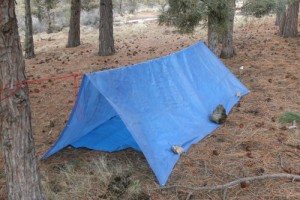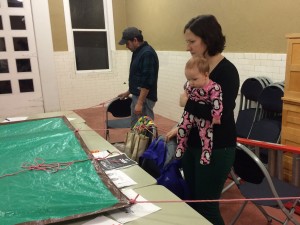One of the advanced trainings that the Portland Bureau of Emergency Management (PBEM) and Portland Fire & Rescue offer for NET members is knot tying.
How are knots useful?
 Uh, how aren’t they useful? After an earthquake, you may need to attach a tarp to a tree to create a makeshift shelter, tie down a load of gear to a truck or cargo bike, carry water a long distance, make a clothesline for drying things, etc. Knowing just a few basic knots will prepare you for this, and it can be useful in everyday life as well!
Uh, how aren’t they useful? After an earthquake, you may need to attach a tarp to a tree to create a makeshift shelter, tie down a load of gear to a truck or cargo bike, carry water a long distance, make a clothesline for drying things, etc. Knowing just a few basic knots will prepare you for this, and it can be useful in everyday life as well!
PBEM’s Knots Guidebook:
Check out the Portland NET Knots Guidebook to learn eight highly useful knots. The guide includes knot tying terminology, information about rope safety, advice about what type of gear to buy, and instructions for the following knots: bowline, clove hitch, figure eight, munter, overhand, prusik, square knot, and water knot.
Trucker’s Hitch:
A t our NET meeting last week, we practiced another highly useful knot: the trucker’s hitch. It’s a compound knot commonly used for securing loads on trucks or trailers, but it’s also great for making a tarp shelter. It gives you a 2-1 mechanical advantage when tightening the rope. Be careful though. You can actually damage the object you’re tying down because of this! This knot holds fast and is easy to untie – traits of any good knot.
t our NET meeting last week, we practiced another highly useful knot: the trucker’s hitch. It’s a compound knot commonly used for securing loads on trucks or trailers, but it’s also great for making a tarp shelter. It gives you a 2-1 mechanical advantage when tightening the rope. Be careful though. You can actually damage the object you’re tying down because of this! This knot holds fast and is easy to untie – traits of any good knot.
Great Knot Tying Resources:
- Portland NET Knots Guidebook by PBEM
- Grog’s Search & Rescue Knots on AnimatedKnots.com
- Nine Knots You Need to Know on LifeViewOutdoors.com
- Knots 3-D app for phones and tablets
There are hundreds of knots you could learn, but knowing just a few is enough for most people. It’s more important to be able to tie a few standard knots automatically while under duress than to learn many knots and not know them well.
Now go get a rope and start practicing!
–Laura Hall, Arbor Lodge / Kenton NET Assistant Team Leader, arborlodgeprepares@gmail.com
